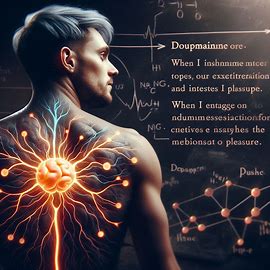The Science of Artistic Inspiration: A Journey Through the Neuroscience of Creativity
- Franco Arteseros
- Mar 24
- 3 min read
Updated: Mar 24

Artistic inspiration has captivated humans for centuries. It's a blend of emotion, thought, and creativity that fuels our creative endeavors. Have you ever wondered what happens in our brains when we create, innovate, and express ourselves artistically? In this exploration, we will uncover the fascinating neuroscience behind artistic inspiration and how our brains spark creativity and open up new avenues.
The Brain and Creativity: An Intricate Connection

The relationship between brain function and creativity is intricate yet fascinating. Research shows that specific brain networks are crucial to the creative process. One of the most important is the Default Mode Network (DMN), which is most active during periods of daydreaming or mind-wandering. For instance, a study by researchers at Harvard University found that the DMN activates when people generate ideas or think about the past and future.
When I let my mind wander, I often stumble upon innovative approaches to a project or discover an unexpected color combination. This ability to connect seemingly unrelated ideas is vital for artistic inspiration.


The Role of Emotion in Artistry

Emotion plays a vital role in the creative process. Neuroscience has revealed that the limbic system, responsible for processing emotions, significantly influences creative thinking. Studies have shown that artists who connect deeply with their emotions—like Vincent van Gogh, who channeled his mental struggles into vibrant and expressive work—often produce more moving art.
For example, a recent study found that artists who engaged with their emotions created artwork rated 30% more evocative by peers compared to those who did not. This connection suggests that embracing our feelings can lead to deeper artistic inspiration, serving not just as a creative outlet but also as a powerful form of self-expression.
Neurotransmitters and the Creative Process
Neurotransmitters play essential roles in our creative pursuits. Dopamine, known for its association with pleasure, drives our motivation and interest in artistic activities. When I engage in creative tasks I enjoy, the rush of dopamine pushes me to explore new directions in my work.
Serotonin, another crucial neurotransmitter, helps regulate our mood. According to a study published in the Journal of Creative Behavior, individuals with higher serotonin levels showed a 25% increase in creative problem-solving skills. Understanding these chemical processes makes it clear: the emotional highs and lows of the artistic journey are not merely external. They are deeply influenced by our biological makeup.
The Power of Collaboration
Creativity often thrives in collaborative settings. Engaging with others activates different brain regions than when we work alone. For example, a study at the University of California showed that individuals working together produced solutions that were 30% more innovative than those developed in isolation.
Personally, when I share ideas with fellow artists, I feel invigorated—excited to push my boundaries further than I could alone. Collaboration introduces diverse perspectives, and this collective creativity leads to new and innovative outcomes. For those of us at ARTESEROSTEK CREATIVE A.I, fostering an environment for collaboration is vital; it can greatly enhance the quality of our work.
Barriers to Creativity: Understanding the Flow
Every creative person encounters barriers that can block inspiration. Factors like anxiety, depression, and stress hinder our brain's creative capacity. Understanding the neurological basis behind these barriers is crucial in overcoming them.
Research indicates that mindfulness and meditation can improve creative thinking by reducing stress. A study from the University of Hong Kong found that regular meditation practice improved participants' creative output by 60%. Through my own mindfulness journey, I have noted significant improvements in my idea generation and overall creative flow. Tackling these obstacles allows artists to cultivate environments ripe for inspiration.
Utilizing Technology to Enhance Creativity
As we explore the link between neuroscience and artistic inspiration, it's essential to consider technology’s role. Innovations in neuroscience, particularly neuroimaging, allow us to visualize brain activity during creative tasks. This understanding can help us fine-tune our creative processes.

Moreover, tools from ARTESEROSTEK CREATIVE A.I enhance our creativity by analyzing data patterns, suggesting alternatives, and generating new ideas. This technology not only widens our creative toolbox but also keeps our motivation high throughout our artistic journeys.
Embracing the Dance of Creativity

Understanding the neuroscience behind artistic inspiration reveals a multifaceted interplay of brain networks, emotional states, and collaborative efforts. This knowledge enriches my appreciation for the creative process and illuminates the path toward greater artistic expression.
In a world fixated on productivity, we must recognize that creativity flourishes in moments of reflection, connection, and exploration. Acknowledging the biological roots of inspiration empowers us to nurture our creativity, creating spaces where art and science intertwine beautifully.


Artistic inspiration is not just a fleeting moment; it’s a scientifically grounded experience. By engaging with this understanding, we can enrich and enhance our creative journey.

FRANCO ARTESEROS...

























Comments